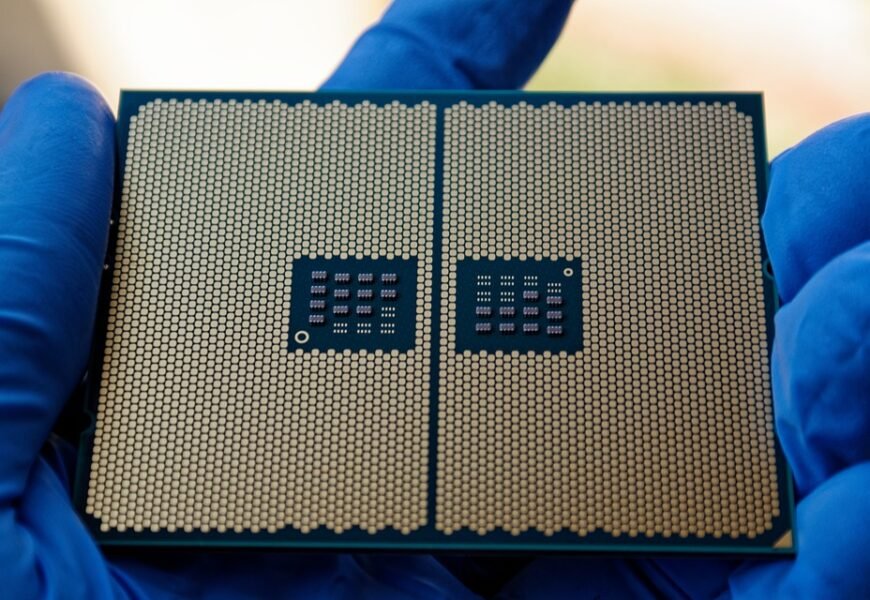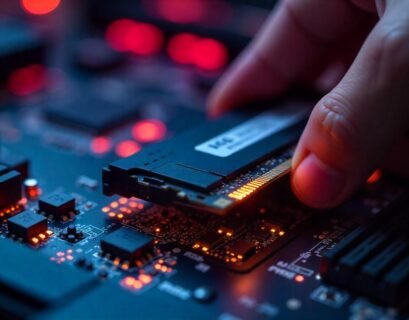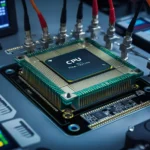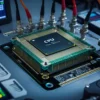In the rapidly evolving realm of technology, innovative applications are critical for fostering advancement across various industries. Companies are increasingly channeling their efforts into leveraging core components—fundamental building blocks that help create value across applications. The importance of these components cannot be overstated; they serve as the foundation upon which innovative solutions are developed, enabling organizations to streamline processes, enhance user experiences, and catalyze the creation of entirely new products and services.
This article will delve into the innovative applications arising from core components, using specific examples from leading tech players in various sectors, industry insights into technological advancements, and a forecasting look into future trends. Lastly, we will conclude with a comprehensive summary of how core components continue to drive tech innovations.
Understanding Core Components
Before we explore the applications of core components, it’s essential to define what these components are. At their essence, core components are the technological or functional elements that serve as the basis for applications, systems, or platforms. These can range from basic software libraries and programming languages to APIs (Application Programming Interfaces), frameworks, cloud computing services, and data analytics tools.
They enable developers and organizations to build scalable and efficient solutions without reinventing the wheel, thus accelerating innovation across industries. Consequently, businesses can focus on higher-value activities, refining user experiences, optimizing operational processes, and generating data-driven insights.
Innovative Applications Across Leading Tech Companies
1. Amazon Web Services (AWS) and Cloud Computing
Amazon Web Services (AWS) is at the forefront of cloud computing, revolutionizing how businesses deploy and scale their applications. By leveraging its core components such as Elastic Compute Cloud (EC2) instances, Simple Storage Service (S3), and Lambda functions, AWS empowers companies to build robust infrastructures without the overhead of hardware management.
Example Application:
Airbnb, a platform that connects travelers with hosts, heavily relies on AWS to manage its growing user base and service needs. AWS allows Airbnb to dynamically manage its resources based on demand, scaling up during peak seasons and down during off-seasons. The efficiency of AWS’s core components facilitates rapid deployment and the ability to test new features in real-time.
Industry Insight:
According to Gartner, by 2025, approximately 85% of organizations will be "cloud-first," underscoring AWS’s strategic position in the future landscape of tech. The growing trend of hybrid cloud solutions combines on-premises and cloud resources, further fortifying AWS’s monumental market share.
2. Google and Machine Learning Frameworks
Google has positioned itself as a leader in artificial intelligence (AI) and machine learning (ML), especially with the introduction of TensorFlow, an open-source ML framework. TensorFlow provides core libraries and tools for building neural networks, accelerating innovation in AI applications.
Example Application:
Google Photos employs TensorFlow for its advanced image recognition capabilities. Users can search their photos by specifying attributes such as "dog," "vacation," or even “beach.” TensorFlow’s powerful algorithms allow the system to recognize and categorize thousands of images efficiently, enhancing user engagement and satisfaction.
Industry Insight:
The AI industry is expected to grow to a $190 billion market by 2025, with Google maintaining a significant role. As organizations increasingly implement ML solutions, the demand for robust frameworks like TensorFlow will continue to thrive.
3. Apple and Integration of Hardware and Software
Apple Inc. excels at creating innovative applications through the seamless integration of its hardware and software core components. The company’s proprietary technologies, such as the A-series chips (which power devices) and the iOS operating system, allow for unparalleled performance optimization.
Example Application:
Face ID is one of Apple’s standout innovations, utilizing cutting-edge hardware (including TrueDepth camera systems) and sophisticated software algorithms to deliver secure facial recognition. The core components of this system include depth sensing, AI processing, and machine learning to continuously improve accuracy and security.
Industry Insight:
In the next decade, we can expect advancements in biometric security solutions to become even more intertwined with our daily devices, with a projected market growth reaching $50 billion by 2026.
4. Tesla and Embedded Software
Tesla revolutionized the automotive industry not only by producing electric vehicles (EVs) but also by embedding advanced software as a core component of its vehicle systems. The company has integrated various software subsystems into its vehicles for autonomous driving, performance optimization, and user interface improvements.
Example Application:
Tesla’s Autopilot is a prominent example where embedded software harnesses core components like camera sensors, ultrasonic sensors, and complex neural networks to provide semi-autonomous driving capabilities. Over-the-air software updates enable Tesla to continuously enhance the driving experience, security features, and functionality of vehicles.
Industry Insight:
According to MarketsandMarkets, the global autonomous vehicle market is projected to reach over $60 billion by 2030, suggesting that embedded software will continue to be a critical enabler of innovation and functionality in the automotive space.
5. Microsoft and Open-source Ecosystems
With the advent of platforms like Azure, Microsoft has strategically shifted toward open-source development to attract a broader developer community. Their core components, such as Azure DevOps and GitHub, facilitate collaboration while breaking down barriers to innovation.
Example Application:
GitHub Actions enables developers to automate workflows directly within their repositories, making processes like continuous integration and deployment seamless. This innovation is vital for modern software development, allowing developers to focus on writing code rather than managing infrastructure.
Industry Insight:
The software development industry is increasingly adopting DevOps practices, with the global market forecasted to reach $12 billion by 2025. Microsoft, equipped with its open-source components, is well-positioned to capitalize on this transition.
Future Outlook
As technology progresses, the role of core components will become even more pronounced. Here are several future trends that will shape the industry landscape:
-
Further Integration of AI: AI will infiltrate more facets of various industries, led by advancements in natural language processing, image recognition, and predictive analytics. Core components that facilitate AI development will result in more competitive advantages for companies adopting these technologies.
-
Greater Emphasis on Security: With an increase in digital transformation comes the heightened risk of cyber threats. Core components dedicated to security, such as multi-factor authentication and distributed ledger technology (blockchain), will gain prominence among organizations looking to safeguard their digital assets.
-
Rise of Quantum Computing: Quantum computing represents a paradigm shift in computing capabilities. Companies integrating quantum core components will unlock vast computational power, addressing complex problems that are currently infeasible, from cryptography to drug discovery.
-
Global Widespread of IoT Devices: As the Internet of Things (IoT) becomes ubiquitous, foundational components like connectivity protocols, data analytics, and cloud services will be essential for managing and analyzing the massive influx of data generated from connected devices.
- Sustainability and Green Technologies: With a global focus on sustainability, tech companies will emphasize developing energy-efficient applications. Core components that support low-carbon technology and renewable energy solutions are likely to see substantial growth.
Conclusion
Innovative applications powered by core components are reshaping industries globally, driving efficiency, improving user experiences, and creating entirely new market possibilities. Companies like AWS, Google, Apple, Tesla, and Microsoft act as torchbearers, revealing how effectively leveraging core components leads to remarkable advancements. As outlined in our discussions, we may witness a future saturated with AI integration, enhanced security, quantum computing, IoT proliferation, and sustainability considerations.
The compulsion for organizations to adopt innovative technologies and rethink their operational approaches ensures that core components will be at the center of future advancements. As companies continue to invest in these components, they will not only enhance their offerings but will also pave the way for unprecedented innovations that could fundamentally transform how we live and work. As we look ahead, the dynamic interplay between core components and innovative applications will undoubtedly remain a critical axis of growth and exploration in the tech industry.


















